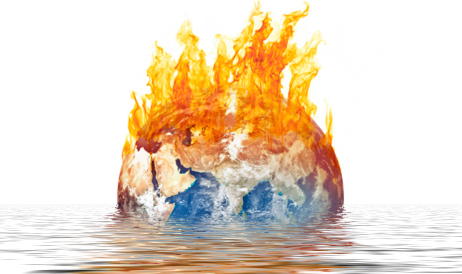 Cross-posted from Council on Foreign Relations.
Cross-posted from Council on Foreign Relations.
The annual International Energy Agency (IEA) World Energy Outlook (WEO) was published yesterday with an attention-grabbing headline: The chance of avoiding dangerous climate change will “be lost forever” unless the world changes course by 2017. The basic argument is simple. The world is constantly accumulating more fossil fuel-based infrastructure (power plants, cars, and so on). If the infrastructure that’s expected to be in place by 2017 is allowed to live out its economic lifetime — something that seems like a realistic assumption — it alone will generate enough emissions to put the world on course for a greenhouse-gas concentration of 450 parts per million (ppm), which much of the climate policy world focuses on. Since it’s implausible to imagine that no more carbon-emitting infrastructure will be built after 2017, the net result will be to bust through the safe limit. The only way out is to start curbing emissions now.
The IEA report is an important warning that delay is imprudent and that a 450 ppm world is increasingly hard to imagine. But I think it goes too far. There are three important reasons to be skeptical of the 2017 deadline that it presents.
The first is that there is no hard threshold that signifies safety. The world might end up at 450 ppm and still experience 4 degrees C or more (7.2 degrees F or more) of warming. It might end up at 650 ppm and only experience 2 degrees C (3.6 degrees F) of warming. Climate change is about probabilities. This doesn’t mean that we should gamble with high greenhouse-gas concentrations — but it does mean that we shouldn’t give up just because some particular threshold gets crossed.
The second is that the IEA imposes an overly strict limit on the emissions that are tolerable between now and 2035. It asserts that cumulative emissions between now and 2035 must be below some certain level (which it calculates) if the world is to avoid crossing the 450 ppm line. That’s incorrect. There are many long-term pathways that are consistent with a 450 ppm (or any other) target, some of which involve larger emissions between now and 2035 than the IEA demands. To be certain, lower emissions now would take some pressure off in the medium and long term. But the hard limit is looser than the IEA assumes.
The third problem with the IEA analysis lies in its assumptions about what existing infrastructure really commits us to. Joe Romm points out correctly that desperation may drive countries to junk infrastructure before its economic lifetime is out. Indeed, desperation might not even be necessary. It is relatively inexpensive to ditch natural gas generating capacity — the up-front capital commitments are pretty small. And if carbon capture and sequestration retrofits can be developed — a big if, I know — it may be possible to lower emissions without ditching existing infrastructure.
That doesn’t change the gist of the IEA message: Delay makes hitting aggressive climate goals increasingly impractical and is thus irresponsible. But it’s unwise to draw yet another final line in the sand. I suspect that if 2017 comes around and we’ve made inadequate progress, people will find a way of extending the deadline once again.


